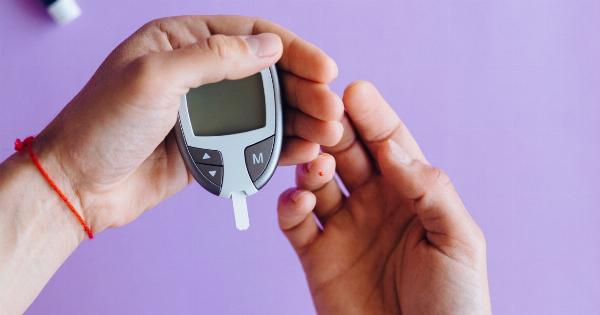Diabetes is a metabolic disorder that affects millions of people worldwide. In some cases, it can be a genetic condition that develops over time, but it can also occur due to poor diet and lifestyle habits.
Type 2 diabetes, in particular, is a chronic condition that arises when the body fails to produce enough insulin or becomes resistant to insulin, causing high levels of glucose in the bloodstream. Although diabetes is commonly associated with older adults, it can also affect children and adolescents.
In fact, the incidence of type 2 diabetes in youth has been increasing over the years, making it crucial to identify the early signs of the condition in adolescence to ensure early intervention and proper management.
Obesity and Weight Gain
One of the most significant risk factors for type 2 diabetes in adolescence is obesity. Being overweight or obese can lead to insulin resistance, where the body’s cells are unable to use the insulin produced by the pancreas effectively.
As a result, glucose builds up in the bloodstream, causing elevated blood sugar levels. Adolescents who gain weight rapidly or have a body mass index (BMI) higher than the 90th percentile for their age and sex are at higher risk of developing type 2 diabetes.
Additionally, excessive weight gain can lead to other health issues such as high blood pressure, heart disease, and certain types of cancers.
Frequent Urination
Another early sign of type 2 diabetes in adolescence is frequent urination. This is because high levels of glucose in the bloodstream can cause the kidneys to work harder to eliminate excess sugar from the body.
As a result, adolescents with diabetes may experience increased urinary frequency and urgency, especially at night, which can lead to disrupted sleeping patterns. Parents should take note if their children are frequently asking to use the restroom or waking up in the middle of the night to urinate. In some cases, bedwetting may also be a symptom of undiagnosed diabetes.
Increased Thirst and Hunger
Adolescents with type 2 diabetes may also experience an unquenchable thirst or hunger. This is because the high levels of glucose in the bloodstream make the body feel dehydrated, causing a persistent feeling of thirst.
Additionally, insulin resistance can prevent the body’s cells from adequately absorbing glucose, leading to persistent feelings of hunger, even after eating. Some adolescents may also experience sudden weight loss due to the body’s inability to absorb nutrients effectively.
Fatigue and Irritability
Adolescents with undiagnosed type 2 diabetes may also experience fatigue, sluggishness, and irritability. This is because the body is not efficiently using glucose as energy, which can lead to feelings of exhaustion and fatigue.
Additionally, high levels of glucose in the bloodstream can cause irritability and mood swings in some individuals, which can negatively impact social and academic performance.
Blurred Vision
Blurred vision can also be an early sign of type 2 diabetes in adolescents. This is because high levels of glucose in the bloodstream can cause damage to the small blood vessels in the retina, leading to impaired vision.
Although vision changes may be temporary at first, they can eventually lead to diabetic retinopathy, a serious complication of diabetes that can cause permanent blindness.
Numbness and Tingling
Adolescents with type 2 diabetes may also experience numbness or tingling in their hands and feet.
This is because high levels of glucose in the bloodstream can damage the nerves that transmit signals to these extremities, resulting in a loss of sensation. If left untreated, nerve damage can progress and cause significant complications, including loss of limb function.
Slow Healing
Slow wound healing is another early sign of type 2 diabetes in adolescence. High levels of glucose in the bloodstream can impair the body’s ability to fight infections and heal wounds, leading to slow-healing cuts and bruises.
In some cases, adolescents may also develop skin infections and other bacterial or fungal infections due to their weakened immune system.
Yeast Infections
Lastly, adolescent females with undiagnosed type 2 diabetes may experience recurrent yeast infections. This is because high levels of glucose in the bloodstream can encourage the growth of yeast in the vaginal area, leading to infection.
Girls may experience itching, burning, and discharge, which can be uncomfortable and persistent.
Conclusion
Adolescence is a critical period for early detection and management of type 2 diabetes. If parents notice any of the above symptoms in their children, they should seek medical attention immediately to prevent further complications.
Early diagnosis and proper management of type 2 diabetes can help adolescents lead healthy and fulfilling lives, free from the debilitating effects of undiagnosed diabetes.



























